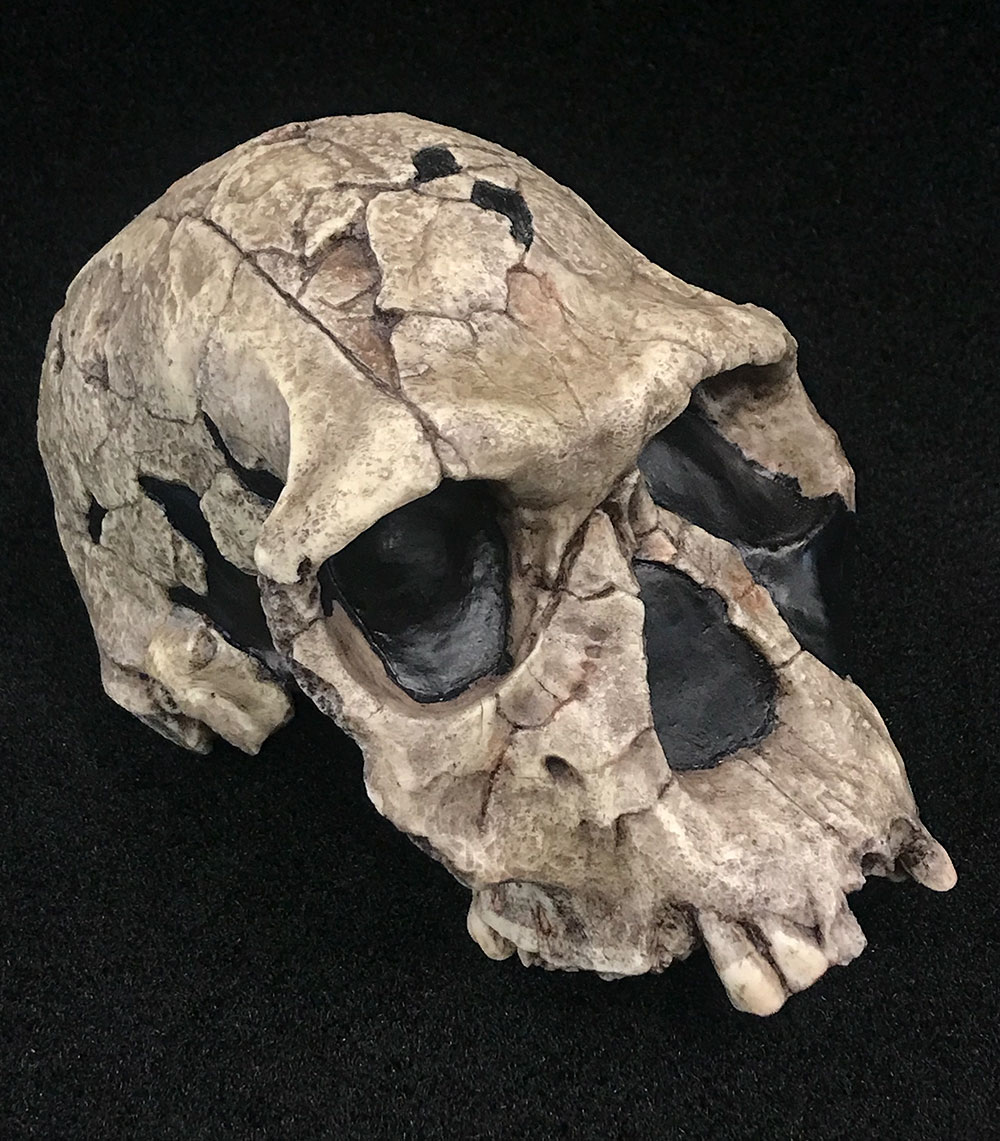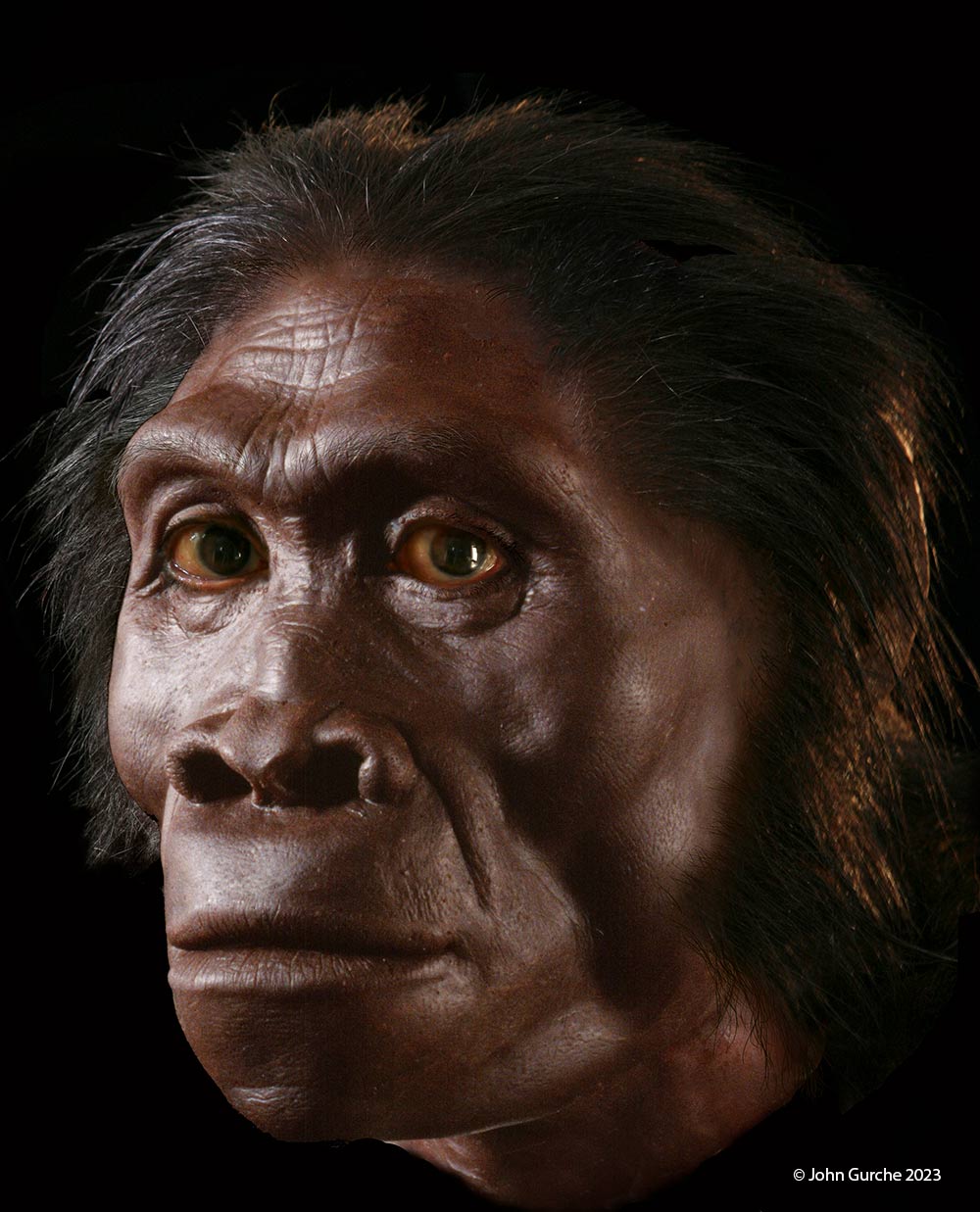Homo habilis
Cranium KNM-ER 1813 - 1.9 Million Years Ago


The Homo habilis Skull KNM-ER 1813 was discovered by K. Kimeu in 1973 at Koobi Fora, Kenya, and described by R. Leakey in Nature in 1973. There is still controversy about this specimen's classification, with some scientists opting to classify it as an australopithecine and others believing it is a species of Homo. Some paleoanthropologists have raised the possibility that KNM-ER 1813 is the female counterpart to the Homo rudolfensis KNM-ER 1470. While dated to the same time period and sharing some characteristics, KNM-ER 1813 has a much smaller face, brain, and teeth than KNM-ER 1470. Other paleoanthropologists argue that its brain size of 510 cc (in contrast to KNM-ER 1470's 750 cc) indicates a size difference too great to be due to sexual dimorphism and represents a separate species. It's also not the case that this specimen is simply an immature version of H. rudolfensis, as the third molar appears to have been worn down. Instead, it has been suggested that it belongs in the category of Homo habilis, with which it shares similarities in tooth size and shape, cranium size, and face shape.
Read more Australian Museum's Homo habilis
- Hominin Skulls - Select a Species
- Ardipithecus kadabba
- Ardipithecus ramidus
- Australopithecus afarensis
- Australopithecus africanus
- Australopithecus anamensis
- Australopithecus garhi
- Australopithecus sediba
- Denisovans
- Homo antecessor
- Homo erectus
- Homo floresiensis
- Homo habilis
- Homo heidelbergensis
- Homo naledi
- Homo neanderthalensis
- Homo rudolfensis
- Homo sapiens
- Kenyanthropus platyops
- Ororrin tugenensis
- Paranthropus aethiopicus
- Paranthropus boisei
- Paranthropus robustus
- Sahelanthropus tchadensis

